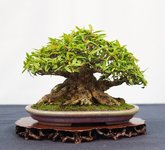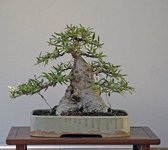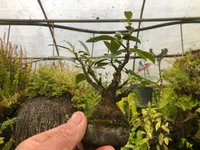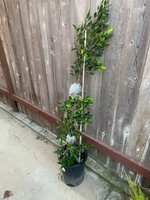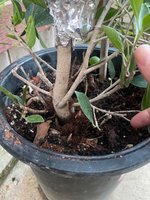Pygo
Sapling
I just picked up a Ficus nitida that’s about 4ft tall at the moment and maybe 2.5 inches thick. I’m planning on letting it grow out for a while, because I’d like to achieve a reeeeally fat base. I’ll most likely air layer the upper portions for the sake of propagation and let some side branches become the temporary leader(s) while it continues to grow out.
Anyway, when the time finally comes to chop it back, one thing I can’t get past is the fact that the larger the trunk, the larger the cut wound that has to heal over. I suppose time heals all wounds, but if I’m chopping a 5” trunk down to like 3-6 inches tall, that’s a massive flat spot that needs to be covered. What’s the strategy for hard chopping a large diameter trunk and eventually hiding that flat spot?
Ultimately, I guess I’ll just let it grow back and see what it does. But is there anything that can be done to sort of mitigate that ugliness?
I’m not fully set on what style I’ll go with this tree yet, but here are some example pics of what I’m talking about. I rarely see any progress pics/albums that show the progression in between chop and final form.
Anyway, when the time finally comes to chop it back, one thing I can’t get past is the fact that the larger the trunk, the larger the cut wound that has to heal over. I suppose time heals all wounds, but if I’m chopping a 5” trunk down to like 3-6 inches tall, that’s a massive flat spot that needs to be covered. What’s the strategy for hard chopping a large diameter trunk and eventually hiding that flat spot?
Ultimately, I guess I’ll just let it grow back and see what it does. But is there anything that can be done to sort of mitigate that ugliness?
I’m not fully set on what style I’ll go with this tree yet, but here are some example pics of what I’m talking about. I rarely see any progress pics/albums that show the progression in between chop and final form.

